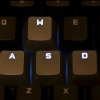what do mosphets do?
-
Featured Topics
-
Topics
-
1
-
bal723 ·
Posted in New Builds and Planning0 -
jaslion ·
Posted in Graphics Cards1 -
Cramig88 ·
Posted in Networking4 -
2
-
Yakinikii ·
Posted in New Builds and Planning7 -
cpugeek21 ·
Posted in New Builds and Planning6 -
joshfrog ·
Posted in Home Theater Equipment0 -
johnt ·
Posted in Troubleshooting3 -
_y0sh ·
Posted in New Builds and Planning3
-



















Create an account or sign in to comment
You need to be a member in order to leave a comment
Create an account
Sign up for a new account in our community. It's easy!
Register a new accountSign in
Already have an account? Sign in here.
Sign In Now